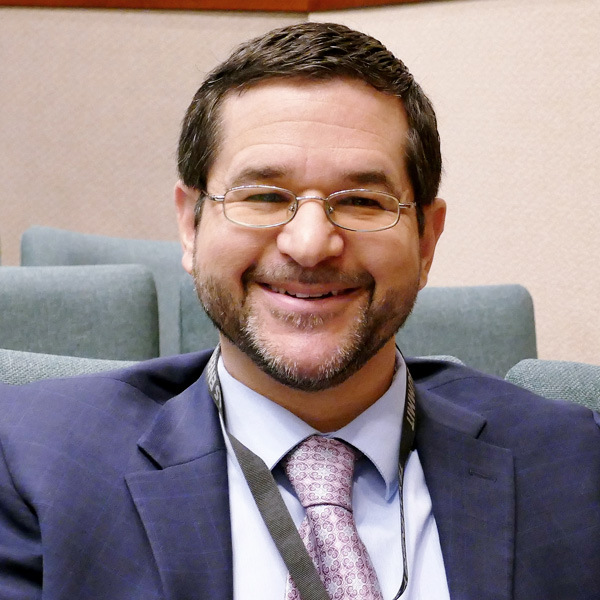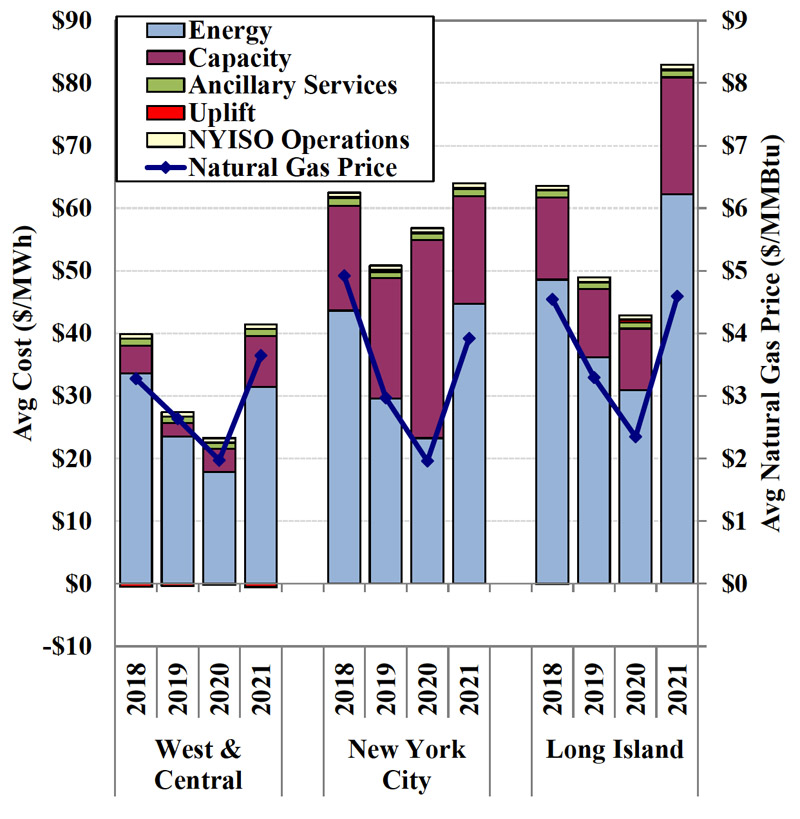ERCOT’s Independent Market Monitor criticized the grid operator’s conservative operations approach Friday, saying requiring additional operating reserves to be available in real-time runs counter to the energy-only market’s design.
In its annual State of the Market report, Potomac Economics said the market performed competitively in 2021 but that it was concerned about an increase in reliability unit commitment (RUC) activity.
The Monitor said that pricing outcomes have become “disconnected” from actual operational conditions in a market where high scarcity prices are designed to incent future investment in lieu of capacity revenues.
“While we continue to believe that an energy-only market can be successful and adapt to changing system needs, it is not compatible with ERCOT’s current conservative operational posture,” the report said. “The distortion in the market’s economic signals will diminish generators’ expected revenues, which ultimately will threaten ERCOT’s resource adequacy.”
ERCOT changed its operational posture in July 2021 after a June conservation notice — previously a routine practice — raised anxiety among generators and consumers still reeling from the days-long outages during the February winter storm.
The IMM said increasing reserves substantially affected market outcomes in the second half of the year.
The changes, which set aside 6.5-7.5 GW of dispatchable reserves in real time as opposed to previous reserve levels of 3.6-5.7 GW, included:
- increased non-spinning reserve requirements;
- routine use of RUCs that included issuing instructions earlier in the day and committing more longer-lead time resources; and
- adjusting forecasts to more frequently rely on the highest load and lowest wind and solar forecasts.
The IMM estimated the higher procurement cost $300 to $400 million from mid-July to year’s end.
“The potential reliability benefits are difficult to justify based on the costs, particularly since the additional procurement is applied to all hours regardless of reliability need,” the Monitor said. “The energy-only market design relies on efficient pricing that reflects the reliability needs of the system. This can increase risk for market participants if ERCOT over-commits the system and renders generation owner’s decisions uneconomic.”
 Doug Lewin, Stoic Energy | © RTO Insider LLC
Doug Lewin, Stoic Energy | © RTO Insider LLC“The IMM confirms what a lot of people have been saying for a long time: a ‘conservative operating posture’ is really an ill-conceived, unvetted, half-baked capacity market and adds a lot of unnecessary costs to consumers’ bills,” Stoic Energy President Doug Lewin, told RTO Insider, calling the report “extremely important.”
Noting the report says ERCOT “will likely need to rely more heavily” on demand-side resources and energy storage, Lewin said, “These are two things the [Public Utility Commission] and ERCOT have done very little to advance so far.”
In the report, the IMM recommends developing an uncertainty product — a two- to four-hour ancillary service deployed when uncertainty results in tight real-time conditions — “to reflect ERCOT’s operating posture.” It also calls for a form of capacity procurement that “augments the economic signals provided by the energy-only market and ensures the adequacy of ERCOT’s resources over the long term.”
“A key component to any capacity proposal is defining a reliability standard,” the report said, noting that such discussions are already underway at the PUC as part of the market re-design’s second phase. (See PUC Selects Firm to Aid in ERCOT’s Market Redesign.)
IMM Director Carrie Bivens said she plans to be at the ERCOT Board of Directors meeting June 21 to discuss the report.
The Monitor also said transmission congestion in the real-time market was up 46%, resulting in $2.1 billion in costs. More than $560 million of that came during the winter storm.
It said ERCOT is increasingly limiting the flows across some network paths to maintain system stability in response to the increase in inverter-based resources. More than 7 GW of new wind and solar resources and 820 MW of energy storage resources came online in 2021, accounting for all but 730 MW of new generation. Congestion rent associated with the stability constraints more than doubled from $190 million in 2020 to $400 million last year.
 ERCOT’s average energy prices since 2014. | ERCOT
ERCOT’s average energy prices since 2014. | ERCOT
According to the report, average energy prices were up six-fold last year to $167.88/MWh. Taking out the winter storm’s $9,000/MWh prices — which totaled more than $59 billion during the week — average prices were $40.73/MWh, consistent with 2021’s increased natural gas prices, the IMM said. Average prices in 2020 were $25.73/MWh.
Total demand for electricity increased by about 3% last year, about 1.3 GW/hour, the Monitor said. Demand in the oil-rich West Texas region was up 7.2% on average as the petroleum industry continues to recover from the COVID-19 pandemic.
The IMM said it continues to look to real-time co-optimization (RTC), which procures both energy and ancillary services every five minutes, as “the most significant change to improve the reliability and competitive performance of the ERCOT markets.” The RTC project, originally projected to cost between $50 million and $55 million, was postponed last year in the storm’s wake. (See “Passport Pushed Back 18 Months” ERCOT Technical Advisory Committee Briefs: April 28, 2021.)
The Monitor added three new recommendations this year to address inefficiencies or improve incentives affecting market performance, bringing the total of suggested market improvements to nine.


